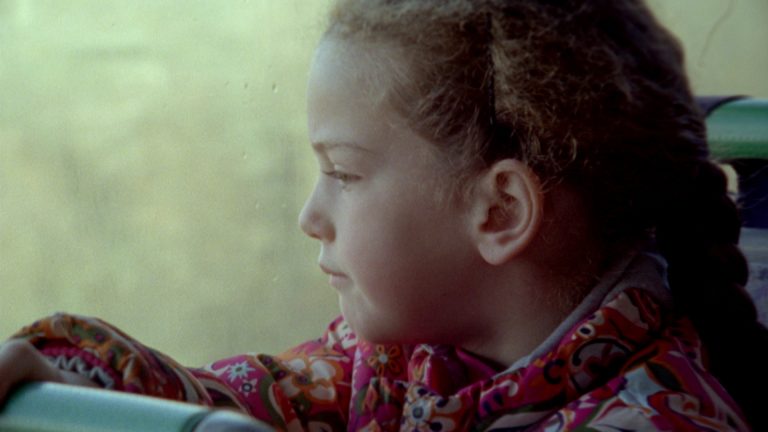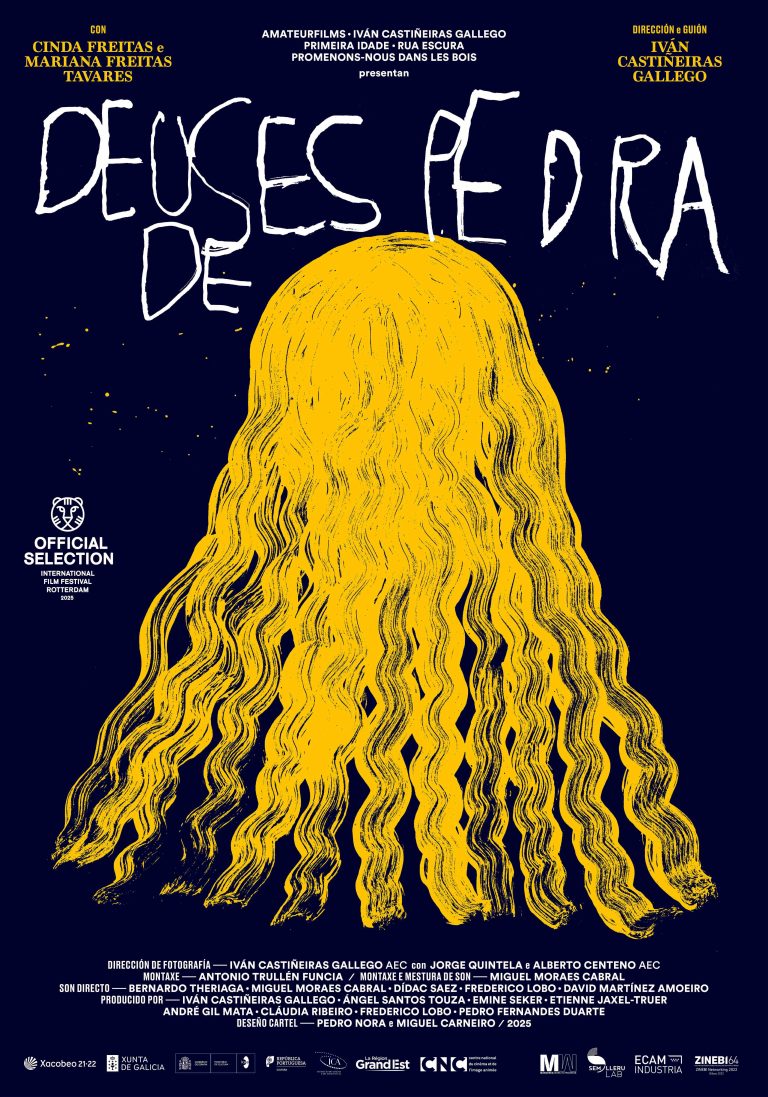Iván Castiñeiras Gallego’s debut feature invites a meditation on rural life, memory, and the quiet pull of elsewhere—
In Deuses de Pedra (Gods of Stone), Iván Castiñeiras Gallego crafts a deeply felt portrait of rural life in the borderlands between Portugal and Spain. Rooted in ethnographic tradition yet rich in poetic reflection, the film traces a young girl’s coming of age amid a village’s slow unraveling—where the forces of modernity, migration, and memory silently reshape a once-tight community.
Legend has it that in the hilly, forested landscapes of southwestern Europe, three kings—the Portuguese, the Galician, and the Castilian—gathered once a year at a sacred stone to share a meal, honoring the peace between their kingdoms. This land has long been a meeting place, a crossroad where different peoples converged, coexisted, and built a shared history. Over the centuries, the titular Gods of Stone (Deuses de Pedra) bore witness to shifting borders and the fading echoes of small kingdoms. Today, they mark the line dividing contemporary Portugal from Spain and quietly observe yet another kind of transformation: the one of rural depopulation. Through this opening legend, Iván Castiñeiras Gallego sets the tone for a film that celebrates the past while trying to come to terms with the present, reflecting on belonging, memory, and the inevitable forces of change.

Premiering as part of IFFR’s Bright Future program—a showcase for bold feature-length (1) debuts—Gallego’s film is deeply rooted in ethnographic observation, yet it transcends mere documentation. Shot over a period of 15 years on 16mm film, Deuses de Pedra embraces the texture of memory. It begins in black and white, capturing the stark simplicity of a family’s life in the village—primary school children playing, beans sprouting in the soil, siblings growing up under the watchful eye of their elders.
“A meditation on belonging, on the ache of nostalgia, and on the loss that inevitably follows every departure.”
The first half of the film feels like a love letter to tradition, lingering on close-ups of faces, hands at work, embroidered dresses, music, and moments of shared experience. Gallego pays homage to local customs and ways of living, immersing the viewer in the rhythms of the village: farming, caring for animals, mining. It’s a world that feels tangible, warm, like an embrace under a thick wool blanket.

Slowly, as the years pass, color seeps into the frame, mirroring the passage of time and the shifting realities of those who stay and those who leave. The warmth of the film’s early moments gradually gives way to an unspoken melancholy. With too few children to attend, the village school quietly shuts down. A local council meeting warns of the looming threat of displacement as land could be sold to a mining corporation. One by one, family members leave, drawn away by career prospects, seeking opportunities elsewhere.
“What remains when people leave?”
At the heart of this slow transformation is little Mariana, the youngest daughter. The film follows her from childhood to adolescence, witnessing the quiet dissolution of her once-close family unit. Siblings disappear, letters replace conversations, and the village that once felt whole begins to feel like a place frozen in time, waiting to be left behind.
“What is left behind?”
Through its carefully composed visual style, Deuses de Pedra reveals both the beauty and fragility of rural life. Simultaneously, Gallego approaches geopolitical questions—borders and territoriality, globalization, community, and belonging—not through sweeping statements, but through intimate, deeply personal moments. In between the lines, the film speaks to a universal human experience—the choice between staying in a place of deep familiarity or leaving in search of something new. It is a meditation on belonging, on the ache of nostalgia, and on the loss that inevitably follows every departure. What remains when people leave? What is left behind? Deuses de Pedra lingers in these questions, an evocative and deeply moving cinematic elegy that captures the warmth of home and the inevitable pull of elsewhere.
(1) feature-length film: a film that has a runtime of over 60min. This distinction is primarily used to separate films into the category of a short film (below 60min) or a feature film (over 60min), no matter what genre.
We use cookies to make sure you get the best out of our presence, and by using our website, you agree to our use of cookies. For more information, read our Policies or reach out to us by email.